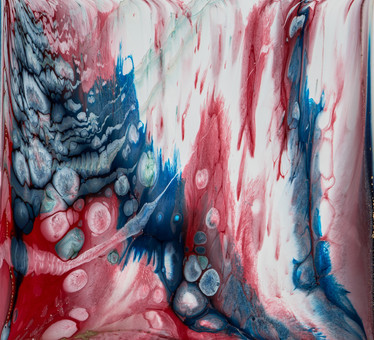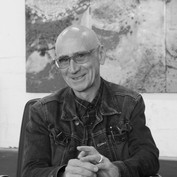Thomas Schönauer

Düsseldorf, Germany, 1953
In Thomas Schönauer’s work, artistic creation is never disconnected from a certain labor of concepts, from an inquiry into the original and the possible. No wonder his work dissolves the boundaries between art, science and philosophy, unfolding a particular dialectic that governs the processes of thought and matter in the common search for the emergence and becoming of things.
Therefore, the artist mobilizes a continuous and deep concern dedicated to space. A sculptor, Schönauer does not think of space only as the area occupied by a sculptural object, but as the locus of interactions between the visible and the invisible, of the relationships between bodies in their proximity and distance, as a transcendence that surpasses the immediate presence and it lets itself be announced in the presentation of objects. This reflection on space is already present in works produced by the artist in the 1990s, such as 19/96 (1996), which underlies a dialogue with non-functional architecture and an understanding that emptiness is so essential to the being of sculptures. how many sensitive elements, its matter and form. But it is above all in works like those belonging to the Skyfall series that this understanding of spatiality as a dimension that is not restricted to the continent of objects becomes pronounced. In them, the heavy steel modules have their aspect transformed by the softness and vitality of the colors, infusing an impression of ethereal lightness to the whole of the sculpture, which, like a whirlpool, seems to move its components towards the ground. This marked downward trend communicates to the sculpture an invisible continuity that extends skyward, as if what is visible came from an extra-mundane region and space.
The same treatment of space as transcendence also extends to Schönauer’s painting works. By seeking to generate a three-dimensional effect from the plane, the artist moved away from traditional painting, developing his own technique based on the use of industrial adhesives on stainless steel. Through this innovation obtained with the help of the chemical industry, the artist can achieve the fascinating effects of his ct-paintings. Using only the basic colors plus black and white, Schönauer makes the paints flow over the steel surface, so that the colors react and mix, drawing mysterious figures that allude to the micro and macro systems acting in the natural world. Thus, paintings often appear that seem to cast a microscopic look at organic tissues and their cellular formations, while others point to the unimaginable dimensions of collapsed stars, supernovae and nebulae or geological and volcanic formations, as if in all cases the nature itself acted on the pictorial plane.
These theoretical and technical components of Schönauer’s paintings are combined with his sculptural practice in the series of works Atompops. These seemingly arbitrary combinations of polished stainless steel spheres are randomly covered by the paint poured over them, intermittently, according to the force of gravity. Here, color grants unity to these bodily compositions, which, however, never cease to preserve a certain independence and individuality, so that the fundamental ambiguity of matter, all composed of autonomous particles, does not cease to manifest itself. In addition, the continuous process of transformation of the composite bodies is also present in Atompops through virtual spaces arising from the reflections of the spheres, generating variations modulated by ambient luminosity and the movement of the observer.
In this way, the art of Thomas Schönauer, in its deep exploration of space and matter, gives rise to a reborn amazement at reality, an endless questioning about the origin, unity and dispersion of things that leads to an inevitable fascination with regard to to the very emergence of everything that came to be.
VRP
Exhibition "Line, Color and Movement"
We present Line, Color and Movement. Dan Galeria's new online collection exhibition.
